The Office of the Director of National Intelligence has released a long-classified memorandum shedding light on the targeted killings of Vladimir Putin’s political adversaries, following nearly eight years of persistent public records efforts. Prominent critics of the Kremlin, and Putin in particular, seem to have a terrible habit of dropping dead under very suspicious circumstances. Some fall out of windows, bludgeon themselves to death, are poisoned or are said to have committed suicide in ways that defy logic. Anonymous US intelligence officials have long said they suspected that some of the mysterious deaths over the years were part of a campaign by Putin to assassinate his enemies. But internal US government documents that contained such explicit assertions have never really surfaced. Until now. There have been a series of notable deaths over the years, beginning with the poisoning of ex-Russian spy Alexander Litvinenko in London in 2006. In 2015, there were two more: First came the shooting of Russian politician and vocal Kremlin critic Boris Nemtsov in Moscow. Then Putin’s former media czar, Mikhail Lesin, died in Washington, DC. Police said later that he succumbed to blunt force trauma after he fell down numerous times in a hotel room. A month after Lesin’s death, the House and Senate intelligence committees demanded answers.
Lawmakers tucked language inside a 2016 intelligence spending bill that tasked the Office of the Director of National Intelligence, or ODNI, with preparing a classified intelligence assessment for the committees. Specifically, it was to be about “the use of political assassinations as a form of statecraft by the Russian Federation since January 1, 2000.”
The directive from Congress, which the public was largely unaware of at the time, also called for ODNI to produce a list of prominent Russians, including politicians, businessmen and journalists, “that the intelligence community assesses were assassinated by Russian Security Services” and describe how and where they were killed.
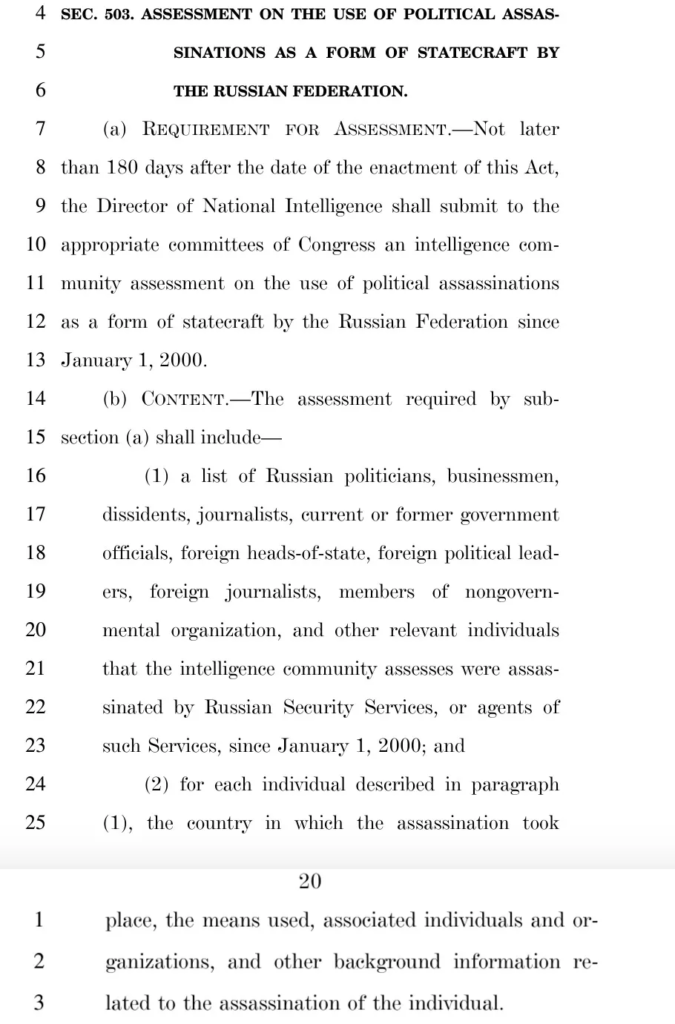
Lawmakers gave ODNI until mid-July 2016 – about six months – to produce the assessment. That was a crazy time. That month, then-Republican presidential candidate Donald Trump called on Russia to find Democratic rival Hillary Clinton’s missing emails and US officials accused Russia of interfering in the election. Meanwhile, the bodies of Russian officials and Putin’s critics continued to pile up, while questions about the circumstances of their deaths lingered.
Fast forward to 2017. I was part of a reporting team at BuzzFeed News working on an investigation into 14 suspicious deaths on British soil that my colleagues and I linked back to the Kremlin. I obtained details from sources about this assessment, but I wanted a hard copy of the document.
I filed a FOIA request with ODNI, but my request was denied because the document and the details in it were deemed highly classified. Never one to fold so easily, I continued to pursue the document long after our investigative series was published. I hit brick wall after brick wall.
I was extremely frustrated. Finally, in April 2021, I decided to break glass. Obtaining this document was an emergency in my mind because I was continuing to report the story. So I turned to an alternative method. I filed a Mandatory Declassification Review, or MDR, which is like a cousin to the FOIA request. Under a section of an executive order signed by former President Barack Obama, the public can request a declassification review of a specific classified document they know exists and request its release.
This week, an email from ODNI landed in my inbox. I was stunned when I saw the attachment. It was the intelligence assessment.
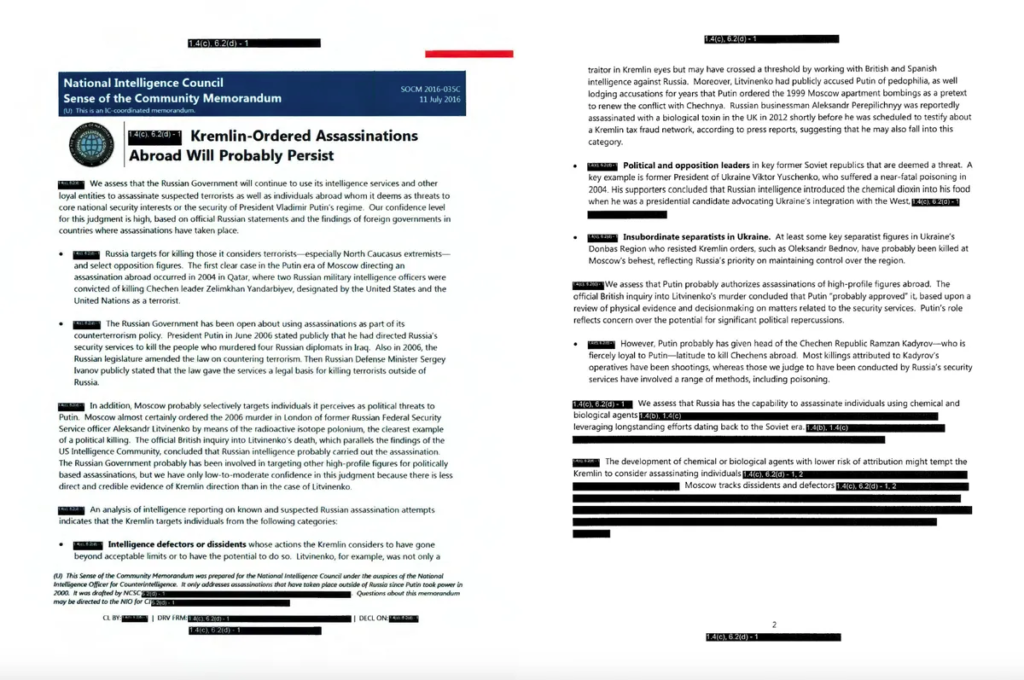
The July 11, 2016 two-page document is titled, “Kremlin-Ordered Assassinations Abroad Will Probably Persist.” A footnote on page one says it only addresses assassinations abroad that have taken place “since Putin took power in 2000.” A letter ODNI sent me that was attached to the two-page memo notes that portions of it were withheld in order to protect classified foreign government information and classified intelligence activities.
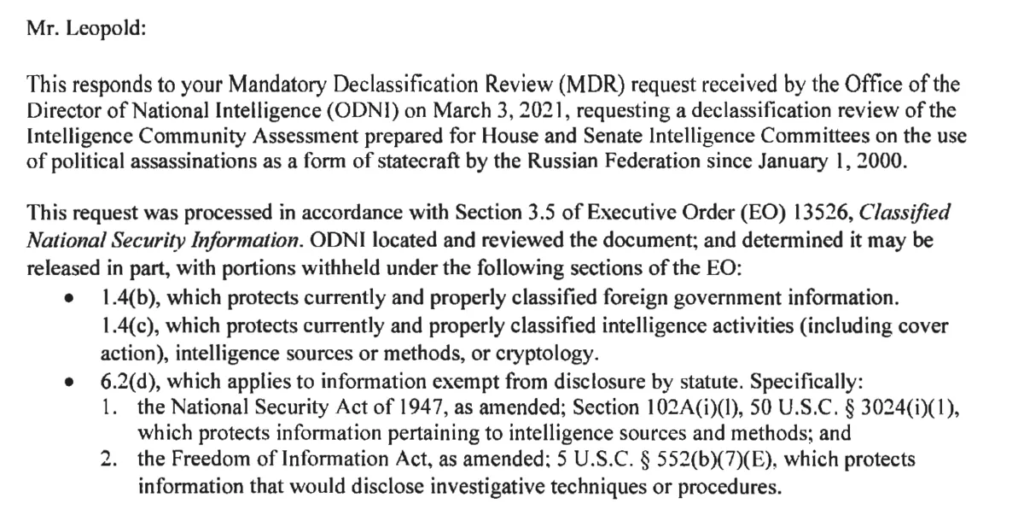
As far as I can tell, nothing like this has ever been publicly released. It was prepared by ODNI’s National Intelligence Council, whose mission also includes preparing a “Global Trends” report for an incoming presidential administration that “assesses the key trends and uncertainties that will shape the strategic environment for the United States during the next two decades.”
The document, which says “Putin probably authorizes assassinations of high-profile figures abroad,” is blunt in its assessment:

The “first clear case” of Putin ordering an assassination abroad took place in 2004 in Qatar, according to the assessment. There, a couple of Russian military intelligence officers were convicted of killing Chechen leader Zelimkhan Yandarbiyev, who was designated as a terrorist by the United States and the United Nations.
It goes on to mention Litvinenko and concludes that “Moscow almost certainly ordered the 2006 murder,” But importantly, the intelligence assessment makes clear that Putin’s government “probably has been involved in targeting other high-profile figures for politically based assassinations, but we have only low-to-moderate confidence in this judgment because there is less direct and credible evidence of Kremlin direction than in the case of Litvinenko.”

And here’s another noteworthy excerpt: It says Putin’s targets include intelligence defectors or dissidents, such as Russian businessman Alexander Perepilichnyy, who was “reportedly assassinated with a biological toxin in the UK in 2012 shortly before he was scheduled to testify about a Kremlin tax fraud network.” I’m highlighting Perepilichnyy’s case because in 2017 my colleagues and I reported he was murdered on the Kremlin’s orders. But UK law enforcement authorities, who bungled the investigation, said his death wasn’t suspicious. An inquest, which didn’t consider intelligence reporting, concluded Perepilichnyy “likely” died of natural causes.

It’s probably no surprise to learn after Litvinenko was poisoned with radioactive polonium-210 (laced in his cup of green tea) that US intelligence officials assessed that “Russia has the capability to assassinate individuals using chemical and biological agents” and has the means to track dissidents and defectors.
“The development of chemical or biological agents with lower risk of attribution might tempt the Kremlin to consider assassinating individuals,” the intelligence document said.
It goes on to identify by name other high-profile individuals Putin “probably” ordered to be killed and notes that he is keen at picking off “insubordinate separatists in Ukraine” such as the 2015 death of Oleksandr Bednov, who headed a militia unit called Batman.

A spokesperson for the Russian embassy in Washington, DC did not respond to a request for comment.
Even though this intelligence document is a little dated, it still has a ton of relevance today. Two weeks ago, 60 Minutes reported that there’s evidence to strongly suggest that since the invasion of Ukraine in 2022, Putin has continued to assassinate his enemies.



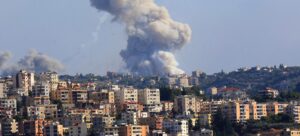


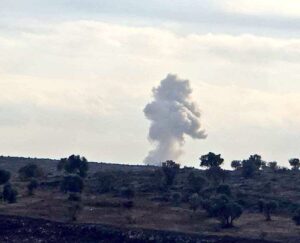
Be First to Comment